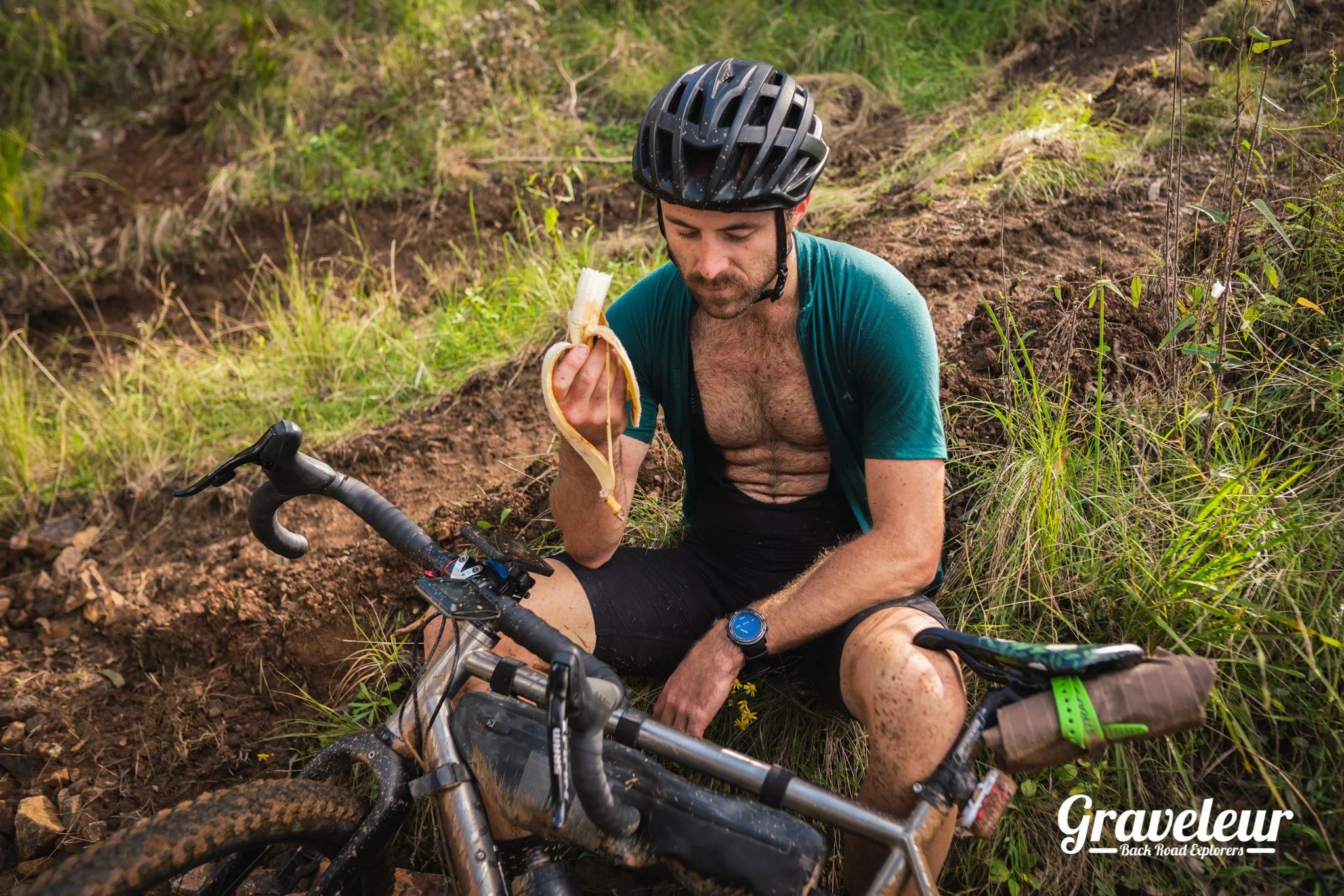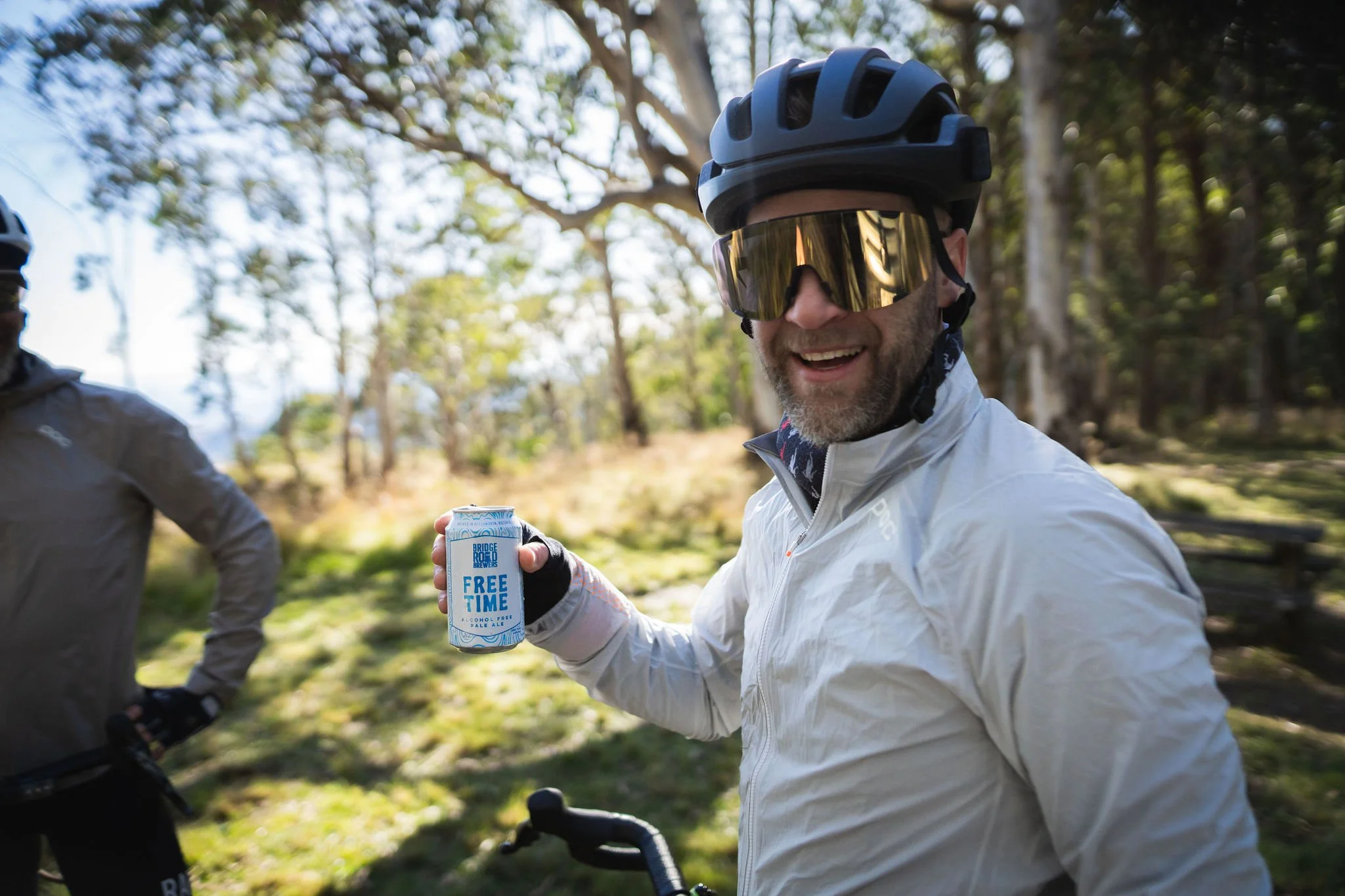Thunderbolts Guide: Developing a Nutrition Strategy
Photos courtesy of Ready Aim MediaRiding Thunderbolts is undoubtedly challenging, and proper fuelling is essential to tackle the demanding day ahead. Whether you’re signing up to your first or fifth Thunderbolts Adventure, nutrition plays a critical role. Let’s break down some key steps for developing a solid nutrition strategy, with tips from fellow cyclist & accredited sports dietician, Rebecca Hay, from Zone34 Sports Physiotherapy.
Know Your Sweat Rate.
Understanding how much fluid you need to consume each hour is the first step. There are some good basic online calculators like this one here which can help – but just bear in mind that these don’t account for variations in temperature. If it’s hot, drink more, if it’s cooler, you’ll probably have to drink less.
Practice taking in what you need in small amounts regularly on training rides.
Familiarise yourself with Course Offerings.
Decide what you are going to drink in the event - will you bring your own or use what’s provided on course?
Keep in mind that Thunderbolts has only one feed station and a water drop before the feed station. Plan to be self-sufficient for the duration of your ride to and from that station, and only take what you need.
Take note of the foods provided on course. For Thunderbolts, you can expect plenty of water, biscuits, lollies, watermelon, oranges, bananas, cakes. There’ll be some electrolyte powder available and limited gels and bars. There’ll also be tea and instant coffee which should go down a treat especially if it’s a bit chilly at the top of the climb!
Collecting natural water on course is an option but all water must be filtered and treated. The best option to manage this is to use Micropur tabs, that kill most things within 30 mins of adding to water. Wait 4 hours for it to kill cryptosporidium (however - it’s not likely to be present in the Barringtons). For more info, check out this article here.
Beware of Thirst Traps.
Sometimes thirst can lead you astray. Imagine reaching the feed station and sculling a can of Coke or a Bridge Rd Brewers pale ale in one hit – satisfying, right? It might feel good until several kilometres later where your gut starts to protest. Sometimes you risk overloading your stomach with too much sugar or carbs in one go… See below on how to manage this!
Aim to consume ~60g of carbohydrate per hour.
The gastrointestinal (GI) system has limitations on how much glucose it can absorb in an hour. Using multiple transport carbohydrates (like fructose) allows for better absorption.
While elite riders in the men’s world tour may consume up to 120g per hour, 60g is sufficient for most riders in events of this length and 60g is a pretty conservative target to aim for and will be plenty for the intensity you are likely to ride for Thunderbolts. Examples of 30g carbohydrate - 1 sports gel, 2 slices of bread, 1 sports bar, 500ml sports drink, 1 small slice of fruit cake, 10 dried dates, 7 jelly babies, 350ml soft drink.
Speaking of soft drinks… You might wonder why Coke is often referred to as the ‘Red Ambulance’. It’s simple: caffeine and sugar! Magic! A Coke gives you ~40g of carbohydrates in a 375ml can and around 34mg of caffeine. So, keep track if you have a can - too much carbohydrate can lead to GI upsets.
It’s best to consume small amounts of food and fluid regularly to keep your energy levels consistent through the day.
Dont wait this long to eat!
Listen to Your Body
Sometimes what your body wants, and what it needs, don’t align.
If you feel the urge to eat or drink beyond your plan during the event, be cautious. You might bring it back up.
Allow time for food and fluid to be absorbed. If needed, back off the pace and introduce small amounts of food and fluid gradually.
If you are burping and feeling a bit nauseous, if may mean you have overfuelled, whic is not necessarily a bad thing. You will just need to give your system a chance to process what’s in your GI. Take small sips of plain water for a period to help settle your stomach and aid the digestion process.
Pack your nutrition in advance.
Prepare your food bags several days before the event.
Include food, gels, bars and sports drinks powders that you’ve been using during training.
Variety is essential to avoid flavour fatigue. For example, pack vegemite and cheese sandwiches in one bag and different flavoured bars, gels and gel lollies in others.
Avoid new on event day.
Stick to what you know. Avoid trying new medications or products (such as painkillers or caffeine) on the day of your event.
Familiarity ensures predictability and minimises any surprises during your ride.
Practice, practice, practice.
Consistency is the key. Train with the nutrition plan you’ve developed.
If you need more guidance, consider making an appointment with a sports dietician like Rebecca at Zone34 Sports Physiotherapy. Online consults make it even more convenient these days.
Remember, proper preparation and familiarity with your nutrition strategy will contribute to a super successful Thunderbolts experience.








